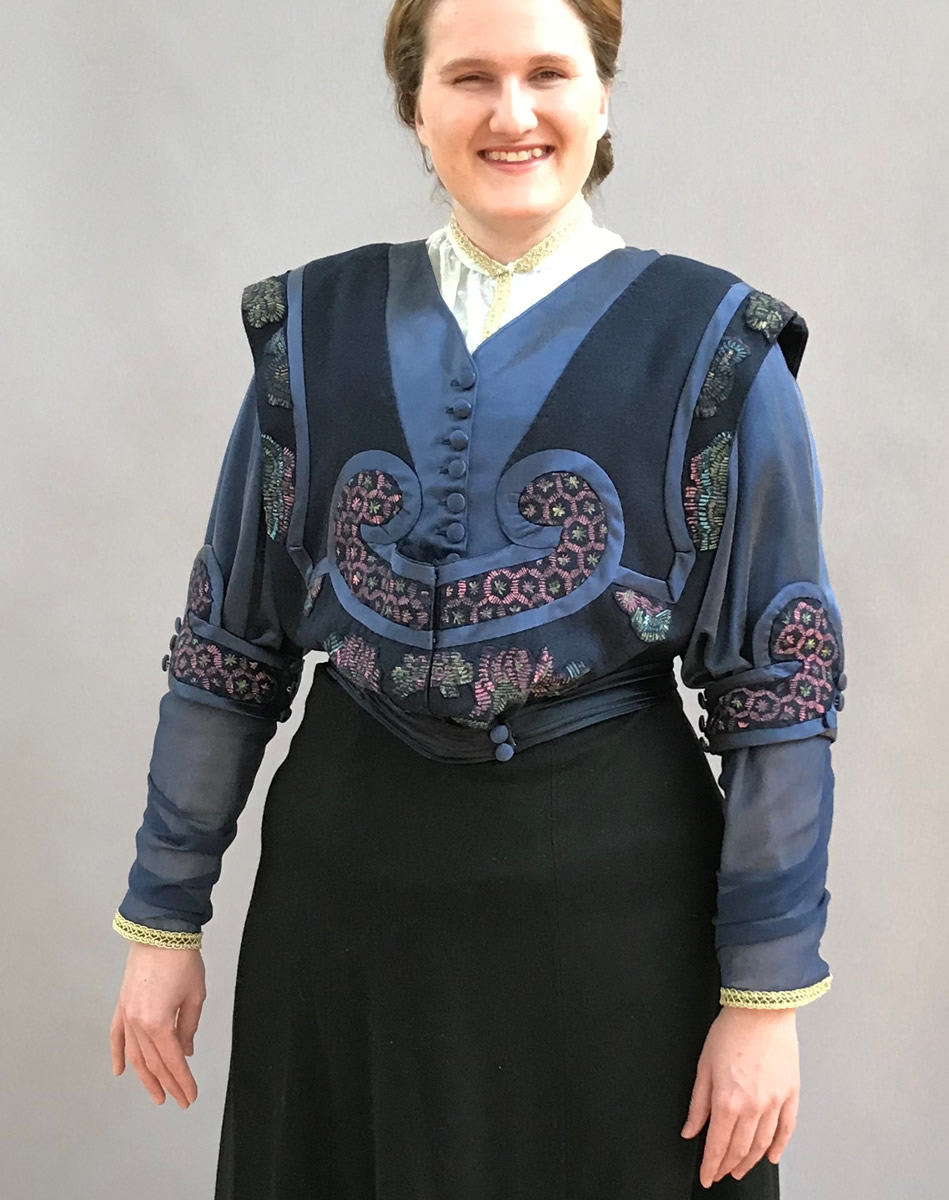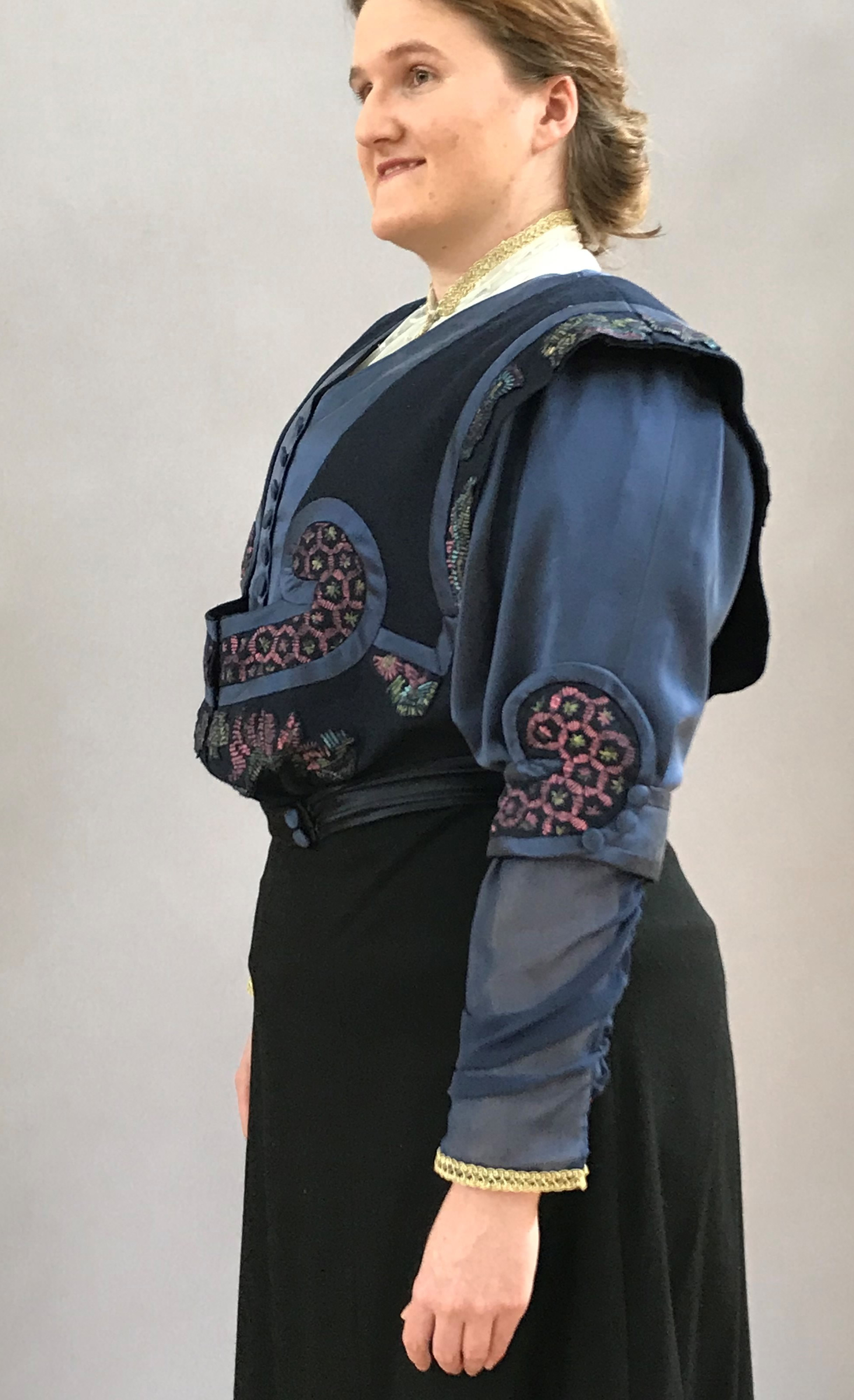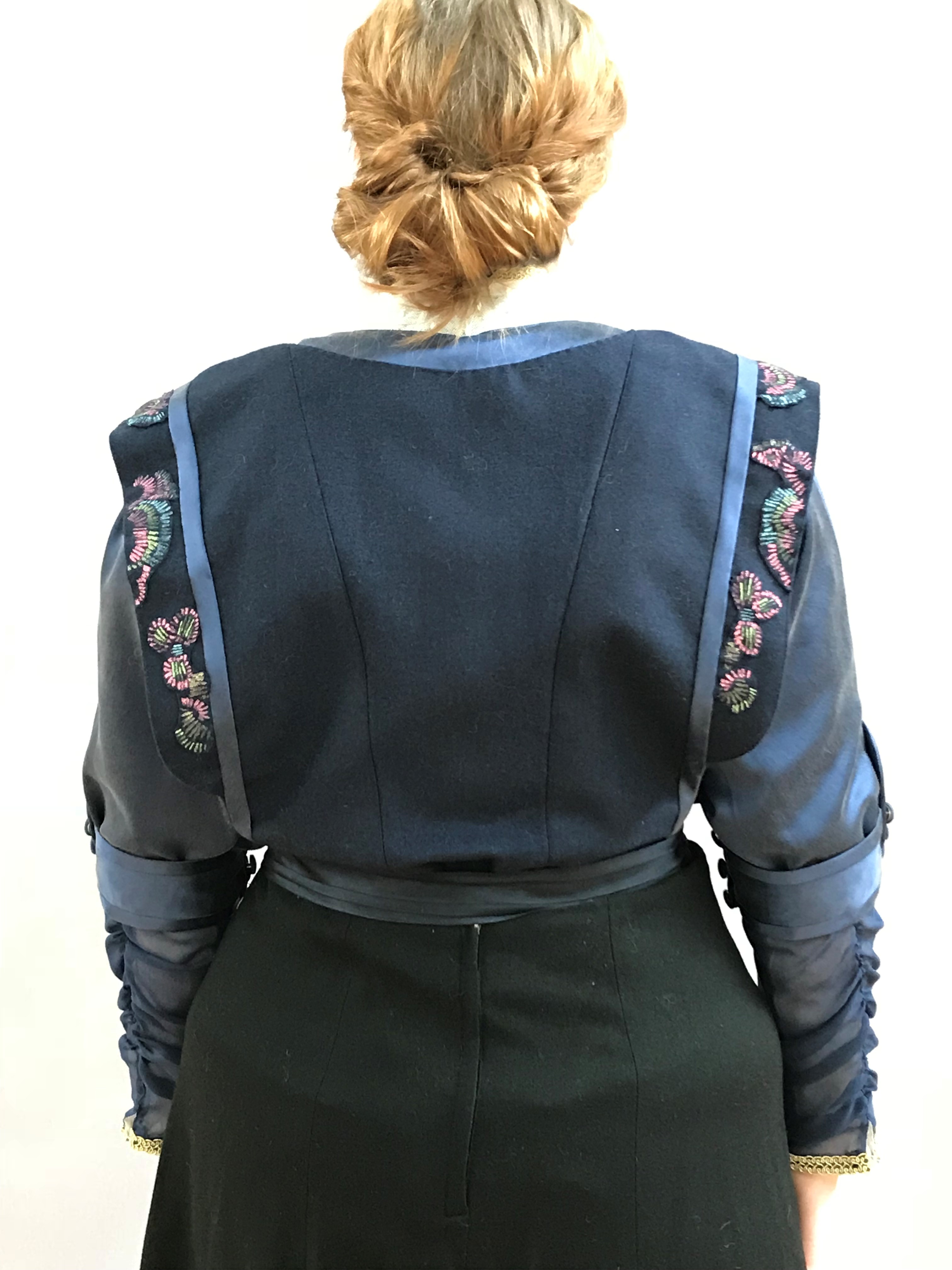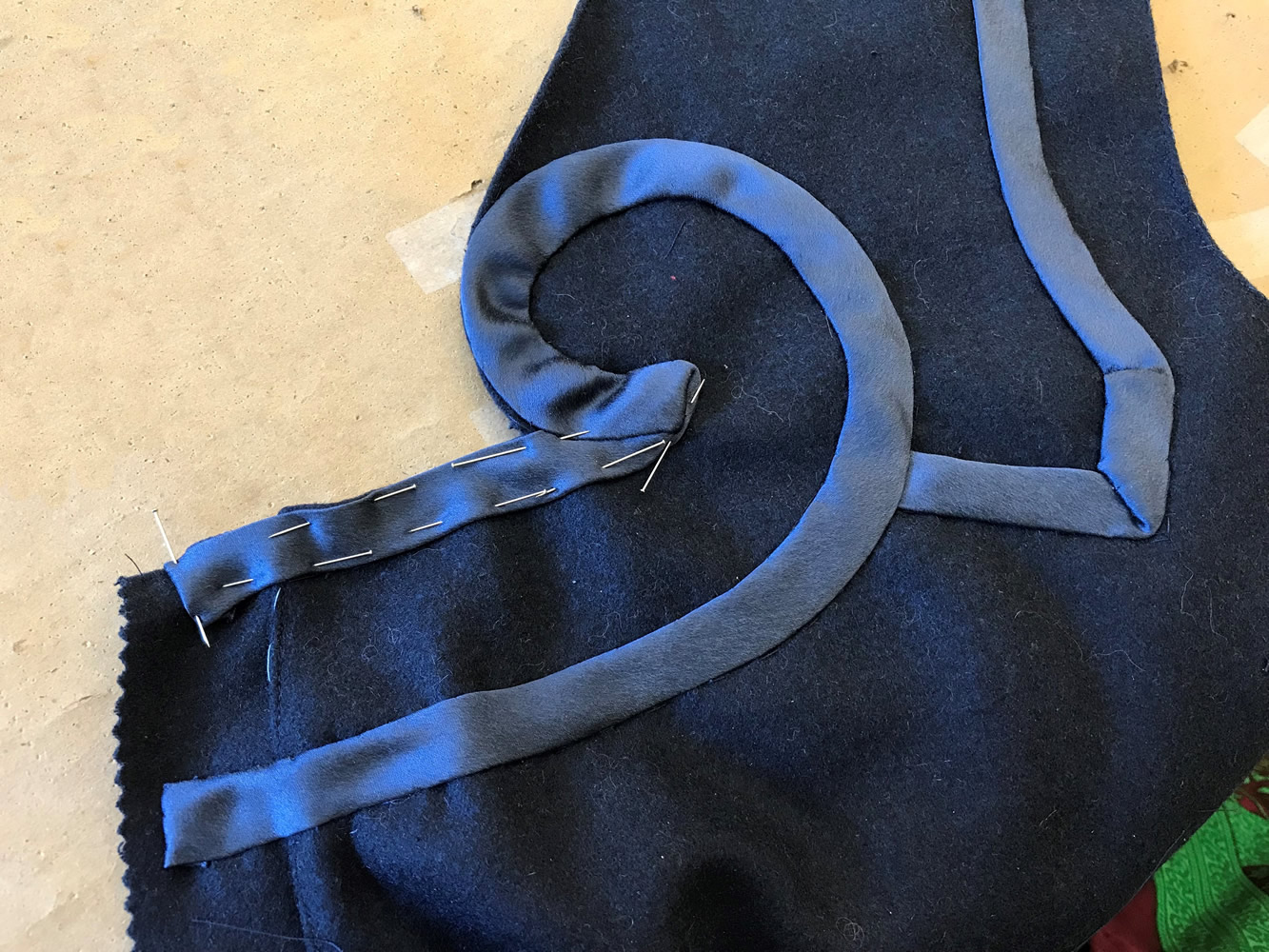Figure 1: Front |
Figure 2: Side |
Figure 3: Back |
 |
 |
 |
The reproduction uses the closest approximation of fabrics and trims that are currently available. Finding wool, silk satin, and silk chiffon were the easiest to find while elements like the dickie net, trim, and notions were much harder. All interior finishing’s were done with modern materials such as metal bones and petersham waist banding.
The biggest changes made during the construction of the reproduction were in the patterning. Seams were lined up in places that they were originally different without obvious reason and changes were made to fit the model. An example is the movement of the shoulder seam of the lace to match the shoulder seam of the taffeta below. In the front of the bodice eggs (see Figure 3 below) were added to fill the space left when the corset reshaped the front chest. The waistline was also reshaped in order to more naturally follow the waistline of the model. Buttons were made out of the same satin material that is in the bodice but the shape changed a bit from the original.
Figure 3: Interior |
Figure 4: Trim Detail |
 |
 |
Additional changes took place in the sleeves. The armscye was enlarged and the sleeve rotated slightly to the back in order to adjust it to a more modern shape. The under sleeve was stopped at the point, which it connects to the elbow because the extension did not serve any obvious purpose. Adjustments were also made to the upper sleeve to drop the back of the sleeve and slim it just a bit for a more natural period look.
Application of the satin bands surrounding the embroidery were done in the same hand stitched manner as the original (see Figure 4 above) but for the reproduction changes were made to the look of the embroidery itself. Embroidered designs on the sleeves and woolen pinafore were done as painted applique for the reproduction. With the use of a skinny brush and acrylic paint each design was carefully considered and transferred to scraps of the wool. When dry the pieces were cut out and then hand stitched to the wool. This process was much faster than traditional embroidery and would allow for alterations in future.
© Erin Torkelson, 2018

